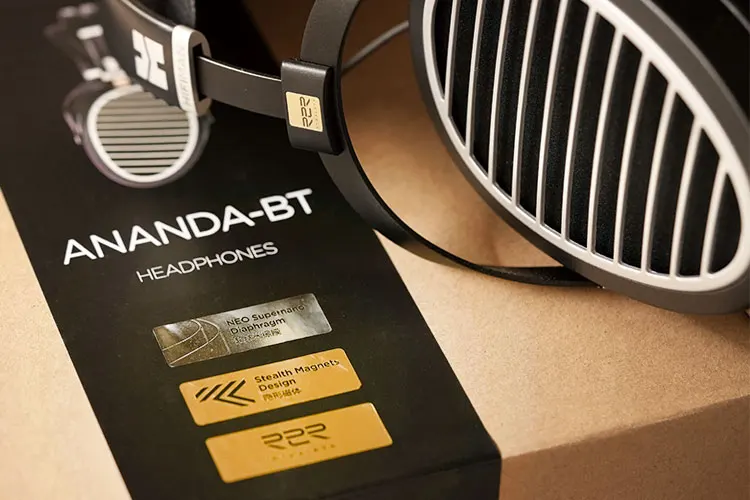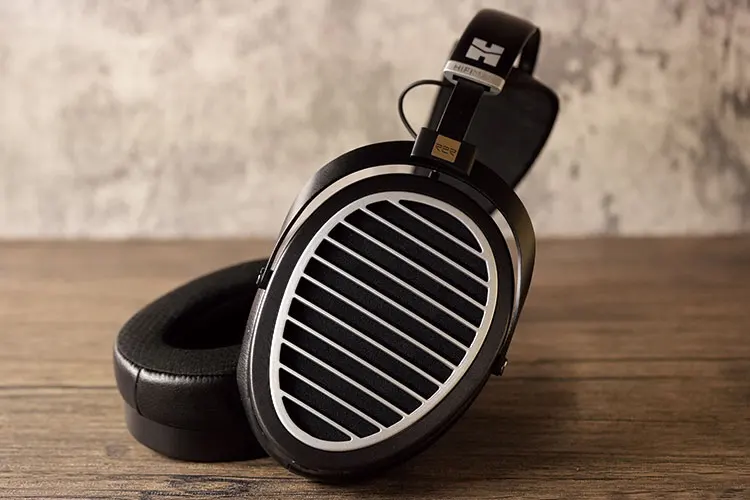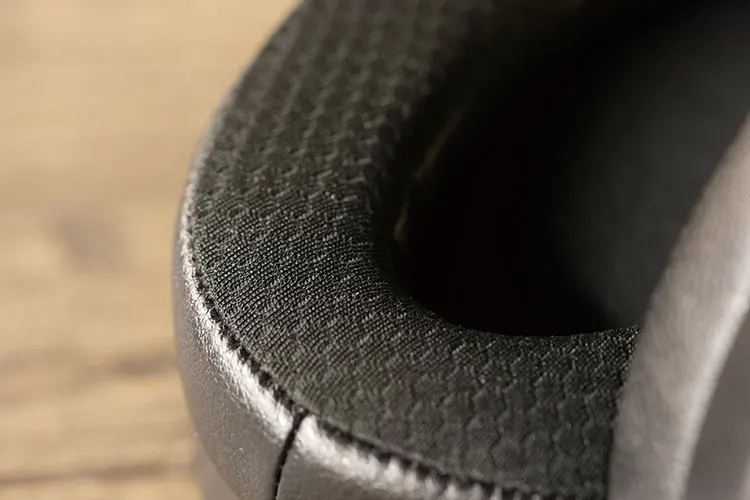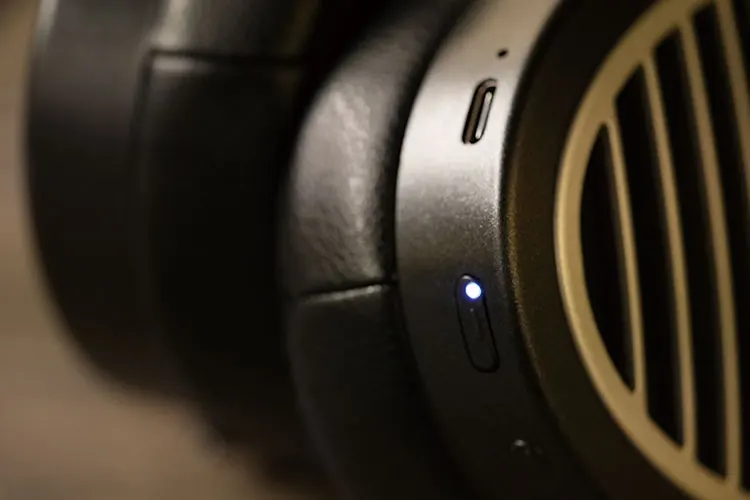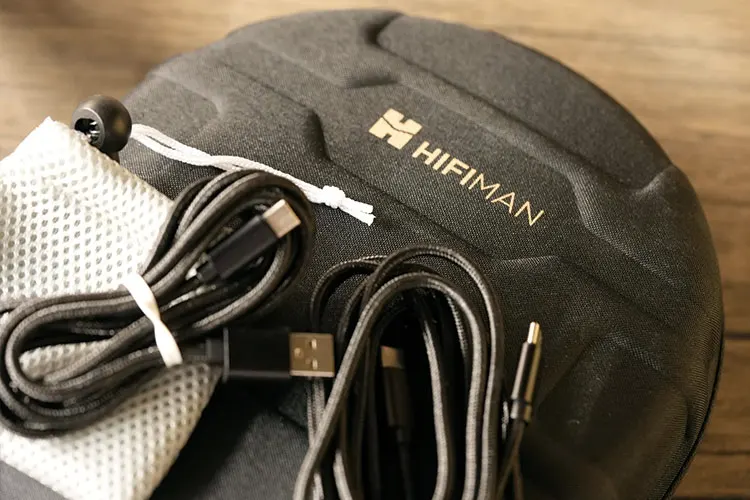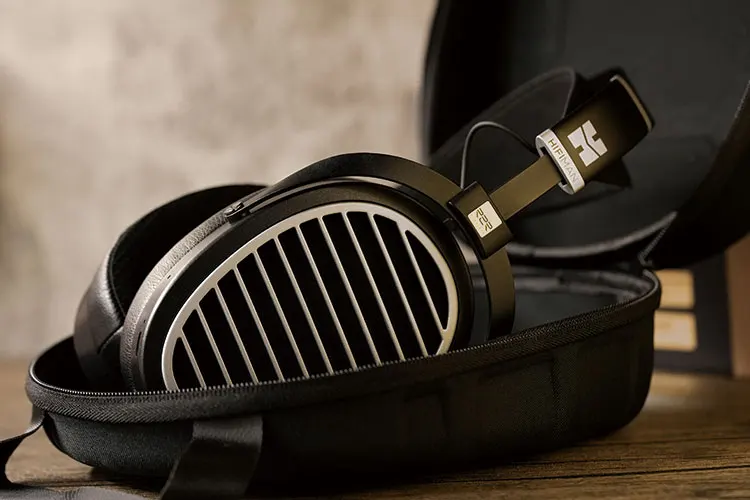Today, James reviews the HIFIMAN ANANDA-BT R2R, a pair of wireless BT5.1 open-back planar headphones with built-in R2R amplification. They are priced at $799
Disclaimer: This sample was sent to me in exchange for my honest opinion. Headfonics is an independent website with no affiliate links or status. I thank the team at HIFIMAN for their support.
Click here to read more about the HIFIMAN products we have previously reviewed on Headfonics.
This article follows our current scoring guidelines which you can read in more detail here.
The HIFIMAN ANANDA-BT R2R is a second-generation version of the 2020 wireless, open-back ANANDA BT Planar headphones. It comes with HIFIMAN’s upgraded proprietary Hymalaya R2R decoding module.
The ANANDA-BT R2R features several other enhancements over its predecessor, including a built-in microphone, boosted playback time from 8 to 10 hours, and the flexibility to use it wirelessly or wired over USB-C cabling.
Most importantly, it is priced significantly lower than the original version at $799. I don’t think there are many options for an R2R open-back planar headset at this price point unless you want to go wired or drop down to the DEVA Pro, making this possibly one of the best wire-free experiences in the market today!
Features
HIFIMAN has incorporated their FPGA-based Hymalaya R2R DAC module and a Bluetooth 5.1 module supporting LDAC, aptX, and aptX HD for a wireless connection that can decode up to 24Bit/96kHz.
The cable provided also supports a USB-C connection. You can directly plug it into a PC or a phone that supports USB audio output, and the ANANDA-BT R2R will automatically be put into USB decoding mode.
The ANANDA-BT R2R planar driver is equipped with Stealth Magnets to suppress interference and prevent sound degradation, which is up to par with the rest of the brand’s lineup. If you remove the foams, you will notice their iconic waveguides designed to enhance the accuracy of the sonic output.
To enhance efficiency, the design includes incredibly thin diaphragms measuring just 1 to 2 microns in thickness, complementing the planar design to provide even faster response speeds.
The ANANDA-BT R2R is rated at 25Ω and 103 dB/mW in sensitivity, which isn’t too demanding and could be quite efficiently driven by the inbuilt R2R module.
It is also efficient enough to lengthen the playback time by 2 hours compared to the predecessor from 2019.
Design
The classic appearance of the ANANDA-BT R2R version closely resembles the original model released in 2019. It also features the iconic stripes on a dark framework, a sturdy hybrid headband, and a comfortable asymmetrical ear cup design.
The joint may be slightly stiff when you first use it, but it gets better after a few uses, or you can apply a bit of lubrication if you want it to slide smoother.
HIFIMAN has made significant improvements by integrating two microphones into the housing compared to the single, plugged-in microphone of the 2019 version.
This dual microphone system includes cVc 8.0 noise reduction technology, effectively filtering out reverberations and ambient noises during conference calls or phone conversations while on the move.
The battery of the ANANDA-BT R2R version charges in under 3 hours and maintains its punchy and powerful sound quality even after 8-9 hours of playback, making it suitable for daily use.
You can charge the ANANDA-BT R2R via USB-C when connected over Bluetooth but when using a wired connection it doesn’t charge the headphones during playback.
Comfort & Isolation
The ANANDA-BT R2R features a relatively large ear-cup design with adequate clamping force, ensuring a secure fit around the ears.
The pressure is just right for moving around without the need to readjust it even after an hour of listening while doing household chores.
This stable and relatively lightweight build provides a comfortable experience, allowing listeners to detach from the desktop setup and remain slightly aware of ambient sounds.
Controls
On the bottom of the earcups, you will find an On/Off button and a Function Button. You press the power button twice to enter the headphones pairing mode.
The On/Off button also doubles as the play/pause button, you can also press it once when a call comes in or when you want to end a call or to hold it for 2 seconds to reject it.
Although HIFIMAN has an app for updating the firmware on Bluetooth devices and supports local media management with TIDAL and Spotify integrated, it doesn’t seem like the ANANDA-BT R2R is supported yet.
I do hope HIFIMAN considers strengthening the App features with DSP/EQ support and allowing some control over the Codecs which would enhance the user experience.
Bluetooth Stability & Range
The ANANDA-BT R2R connects flawlessly over 5m across the living room with a slightly stronger signal strength than my MacBook Air.
The connection strength is sufficient when streaming from the laptop and for the user to roam around. Even when streaming over LDAC from my phone the connection remains stable across a few meters with no intermittent signal drop.
Packaging & Accessories
The packaging of the ANANDA-BT R2R follows the same design language seen on their recent headphone releases such as the Mini Shangri-La.
User instructions are printed on the packaging, and upon opening it, you will discover the ANANDA-BT R2R enclosed in a protective case, along with two USB cables in a small pouch – a USB-A to USB-C cable and a USB-C to USB-C cable for connection to USB sources.
Sound Impressions
I gave the ANANDA-BT R2R more than 50 hours of break-in time before putting down the below impressions. I used the ANANDA-BT R2R in wireless mode connected to my MacBook and my phone with an LDAC connection.
Summary
I only own the ANANDA NANO and not the last-generation ANANDA BT, yet I have had the opportunity to demo it twice. I liked the tuning and power, but at that time, I thought it would be nicer to enhance the detail retrieval power in the mids and give the treble a bit more air, which could help pump up the dynamics.
The ANANDA-BT R2R improves on these areas, delivering well-separated mids, richer texture, and a W-shaped tuning that emphasizes the dynamics and richness of the mid-lows.
The R2R implementation also thickens the vocal notes, elaborating harmonics with stronger texture and meatiness, and rendering the treble more natural-sounding. There is a good level of separation and speed that aligns with my expectations for a Planar-based design.
Similar to my experience with some other devices that simultaneously support Bluetooth and USB connection, you can hear USB decoding producing better output quality.
In particular, the treble sounds more refined and controlled. Therefore, it is recommended to plug it in while sitting in front of the PC and unplug the cable when you have to roam around.
Bass
I was worried that a wireless, open-back setup wouldn’t have sufficient power to drive the planar drivers, especially with R2R tech that may sometimes sound softer on weaker power sources.
However, the thin NSD membrane can be very efficiently driven by the R2R module to deliver solid attacks as if listening to a wired setup.
A subtle rumble can be heard, and the upper bass has a slight elevation, providing sufficient but not excessive energy when listening indoors, particularly with pop music and streaming content.
Testing with Classical music that has consecutive, powerful bass attacks, the ANANDA-BT R2R is quite responsive, managing to maintain its speed well, sounding clean and textured while delivering the bass with good power.
When switching to pop and EDM tracks, the ANANDA-BT R2R can also keep up nicely in speed while delivering the lower bass with satisfactory richness and layering without any struggle. The upper bass is slightly dipped to allow the vocal to cut through clearly without letting the bass bleed over.
The bass packs good punching power and sounds quite expansive. If you use it outdoors it may be helpful to boost the bass level by a few dB as this is an open design.
Mids
The midrange performance is the highlight of this design, likely because of the newly implemented R2R module that colors the vocal range more vividly and the tuning boosts the vocal range slightly for clarity.
Acoustic instruments and the vocal are well-empowered, sounding energetic and quite intimate in positioning, with a small boost in the upper mids that strengthens its presence and penetration power, favoring guitars and other string instruments at the same time.
The tuning also gives a stronger sense of separation as the vocals stand out quite a bit from the backing instruments.
There is a good sense of texture and weight compared to the ANANDA NANO powered by solid-state amplifiers, which sounds more neutral.
If you connect the ANANDA-BT R2R using USB-C outputs, you can feel the vocal body or instruments across the mid-bass holding together a denser image. The layering and positioning is further enhanced.
Treble
When connected wirelessly the ANANDA-BT R2R is slightly shy in treble power despite the upper mids region being boosted to add to the vocal penetration power.
This is probably the limitation with a wireless design though HIFIMAN tunes it nicely to sound rounded but not curtained. With an open-back design, there is sufficient air and openness, while there is also good roundness so voices, strings, and woodwinds are not too sharp.
Violins and flutes sound quite forwarded on the ANANDA-BT R2R with a small boost in the 7-8kHz area. With sharper-sounding or more breathy vocals, especially live recordings it sounds naturally delivered without being overly compressed, also capturing good air.
Again, when using a USB-C connection, the treble sounds more swiftly delivered and it is even more noticeable at a higher volume or when the tempo is fast with EDM tracks or larger assemblies.
Staging & Dynamics
As I have emphasized, there is decent separation power. When testing Opera, Pop, and Jazz recordings, you can hear the virtuoso imaged closely, with the backing instruments stretched around quite intimately as well.
The experience is akin to standing right in front of the stage. Other instruments are also precisely positioned thanks to the slightly boosted treble frequencies, and the fast bass response adds a sense of accuracy to their placement.
The ANANDA-BT R2R presents a wide, oval stage, with satisfactory depth and good width on the x-axis. This allows panning drum sets to be clearly defined, creating an open feel for live recordings with details in the ambiance well captured.
Wired Audio Performance
Comparing the wired and wireless performance on my MacBook Air which does not feature LDAC and using the stock USB-C cables supplied, the ANANDA-BT R2R sounds more opened up in the treble with wired connection.
The treble also seems slightly more pronounced with better clarity and separation for the mids. When connected in wireless mode, the bass sounds slightly fuller which is ideal for outdoor listening.



